BMW Motorrad Flexible Motorcycle Concept VISION NEXT 100
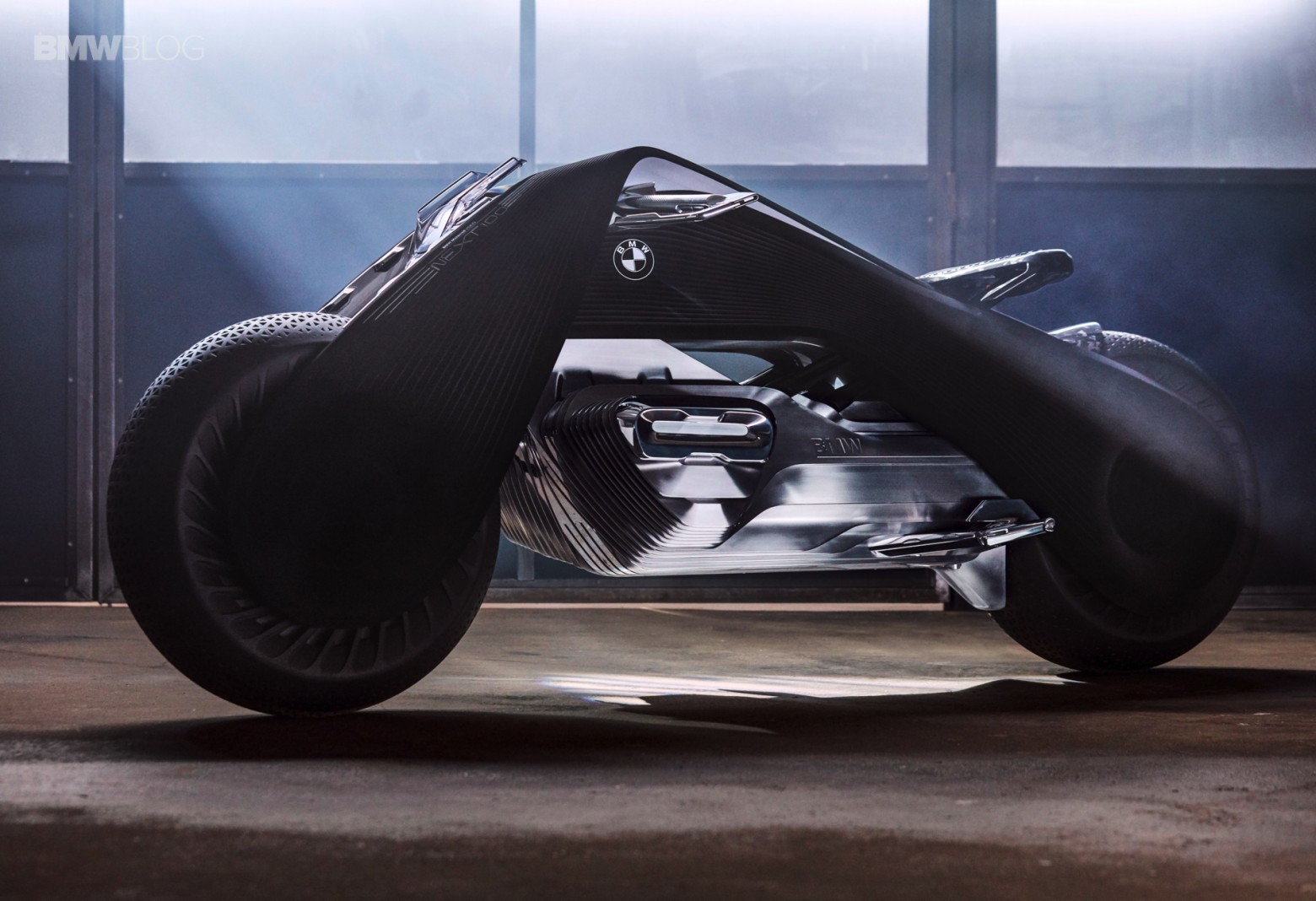
Automotive designers periodically delight us with fantastic concepts. Rarely what are translated into reality. But they make it clear in which direction the technical idea is moving, what the future transport can become.
For example, the new BMW Motorrad concept VISION NEXT 100 shows how BMW sees motorcycles in the next hundred years. The flexible frame rotates with the steering wheel. Head visor with display. And the super-security that allows you to drive even without a helmet.
The concept was developed as part of the celebration of the 100th anniversary of the company under the motto "The Next 100 Years", that is, the "Next 100 years".
')
The most unusual thing about this bike is the flexible Flexframe frame, which bends along with the steering wheel. How this will be implemented technically is difficult to even imagine. It remains only to take for granted this technology that BMW promises to invent in the future.
Thanks to this fantastic technical solution, the designers managed to get rid of various hinges, bearings and other details in the design. They are simply not here. Just one piece flexible frame.
The black triangle of the frame is combined with the white color of the engine. Designers themselves call such a frame a “functional sculpture.” No hinges are visible, the frame looks like a solid cast.

The surface of the frame is covered with a matt-dark fabric.
Naturally, the “motorcycle of the future” is equipped with an electric motor and batteries. Nevertheless, the appearance of an electric motor resembles an opposed internal combustion engine, which has been installed on motorcycles for a hundred years. The outer plates on the engine are pulled out only while driving to improve aerodynamics and protect the motorcyclist. When parking, they move into a more compact form.
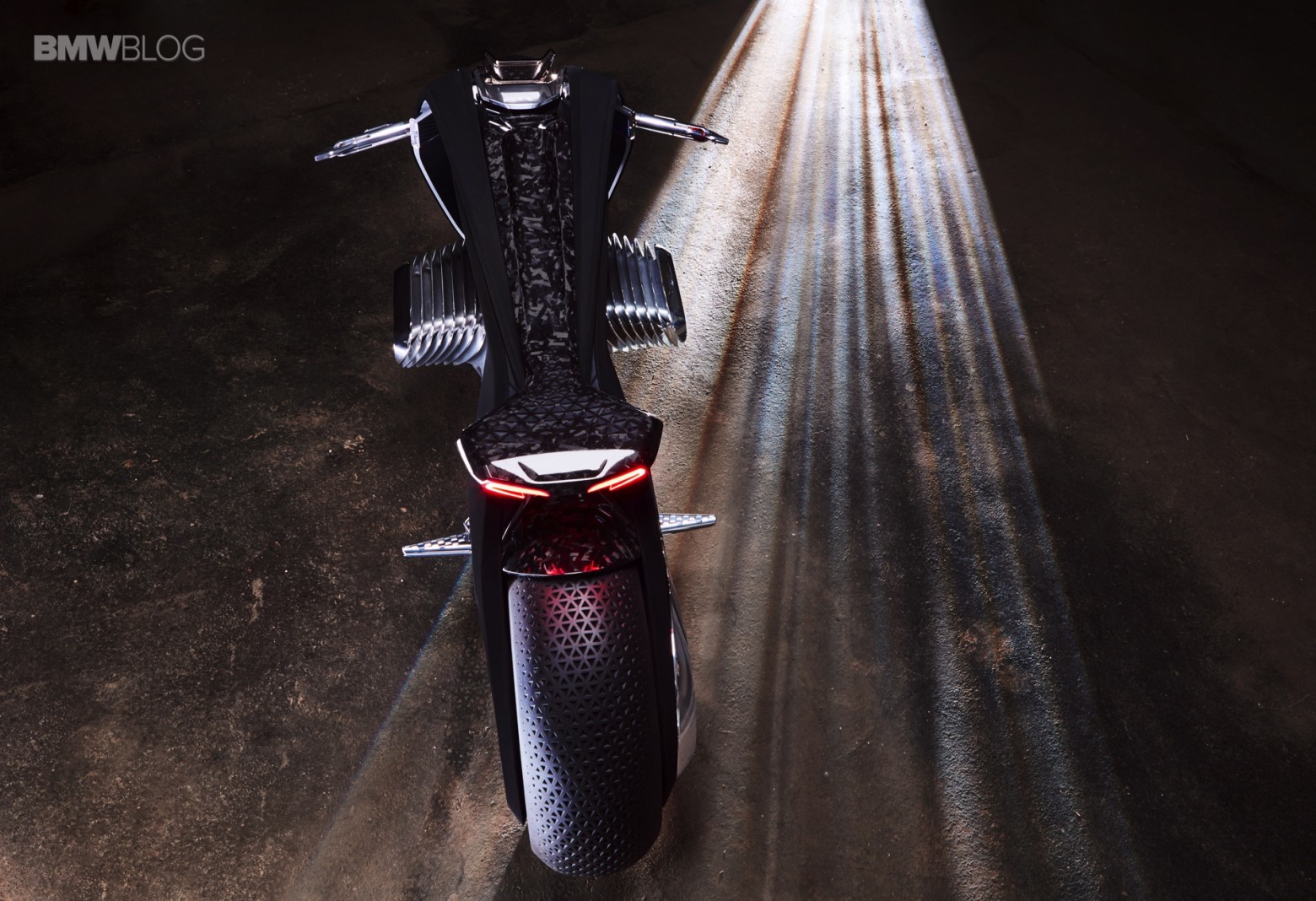
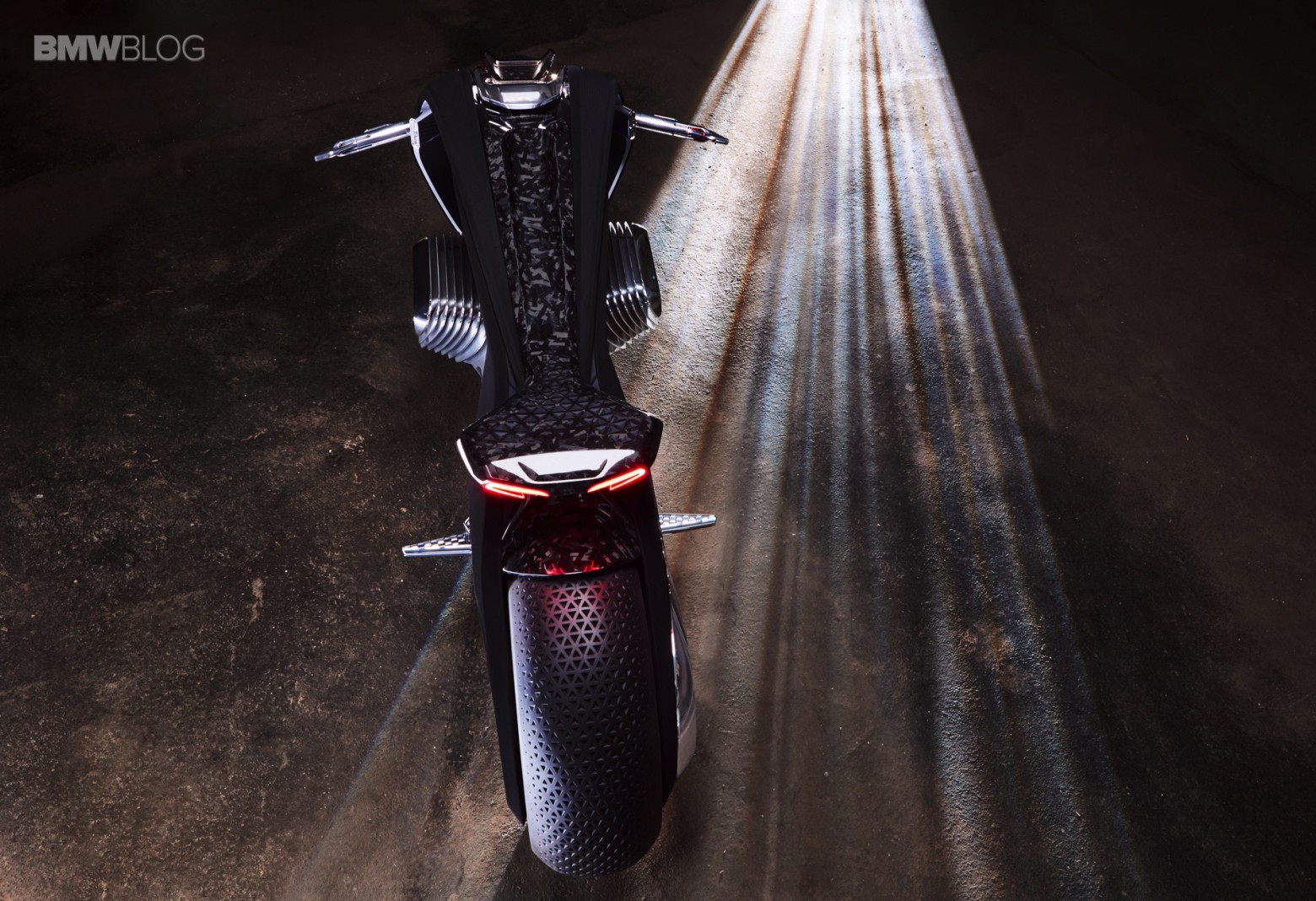
Despite the futuristic look of the concept, the designers tried to preserve the continuity of generations. According to the designers, this form of a motorcycle will allow you to immediately recognize the BMW model in it.
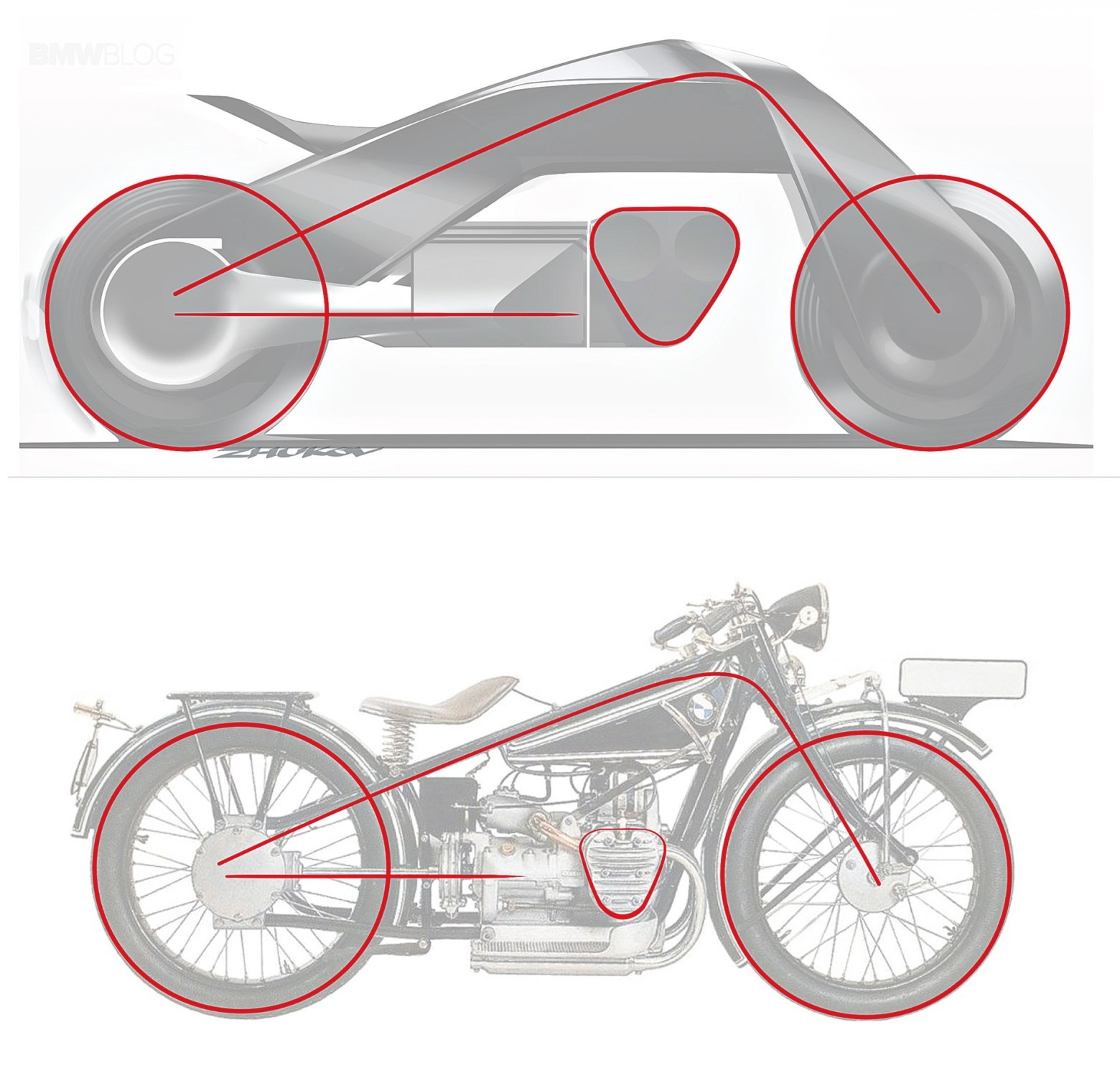
The proportions between the key units of the car correspond to the proportions in the BMW R32 - the very first motorcycle, which was released under the name BMW. It happened in 1923.
In those days, BMW had a hard time. Founded in 1916, the company successfully engaged in the production of aircraft engines during the First World War. But according to the Versailles Peace Treaty, the losing Germany was banned from producing aircraft engines. The BMW military contractor had to look for ways to diversify production. In which area can engine engineering engineering be applied? Of course, in civilian cars and motorcycles. So there was a car brand BMW, which is known to all.
Generally, BMW did not plan to manufacture motorcycles, but in 1919, commissioned by Victoria Werke AG, developed the M2B15 two-stroke internal combustion engine. It was the beginning of the BMW motorcycle history, which in 1923 gave birth to its first R32 motorcycle. For it, they made a more advanced version of the engine - M2B33 with a power of 8.5 hp. (6.3 kW).
The 21st century motorcycle BMW Motorrad VISION NEXT 100, of course, will be much more powerful than its 100-year-old grandfather. Although for concepts, no technical characteristics are announced, but even from the published photos it is clear that the girl flies faster than the wind speed.
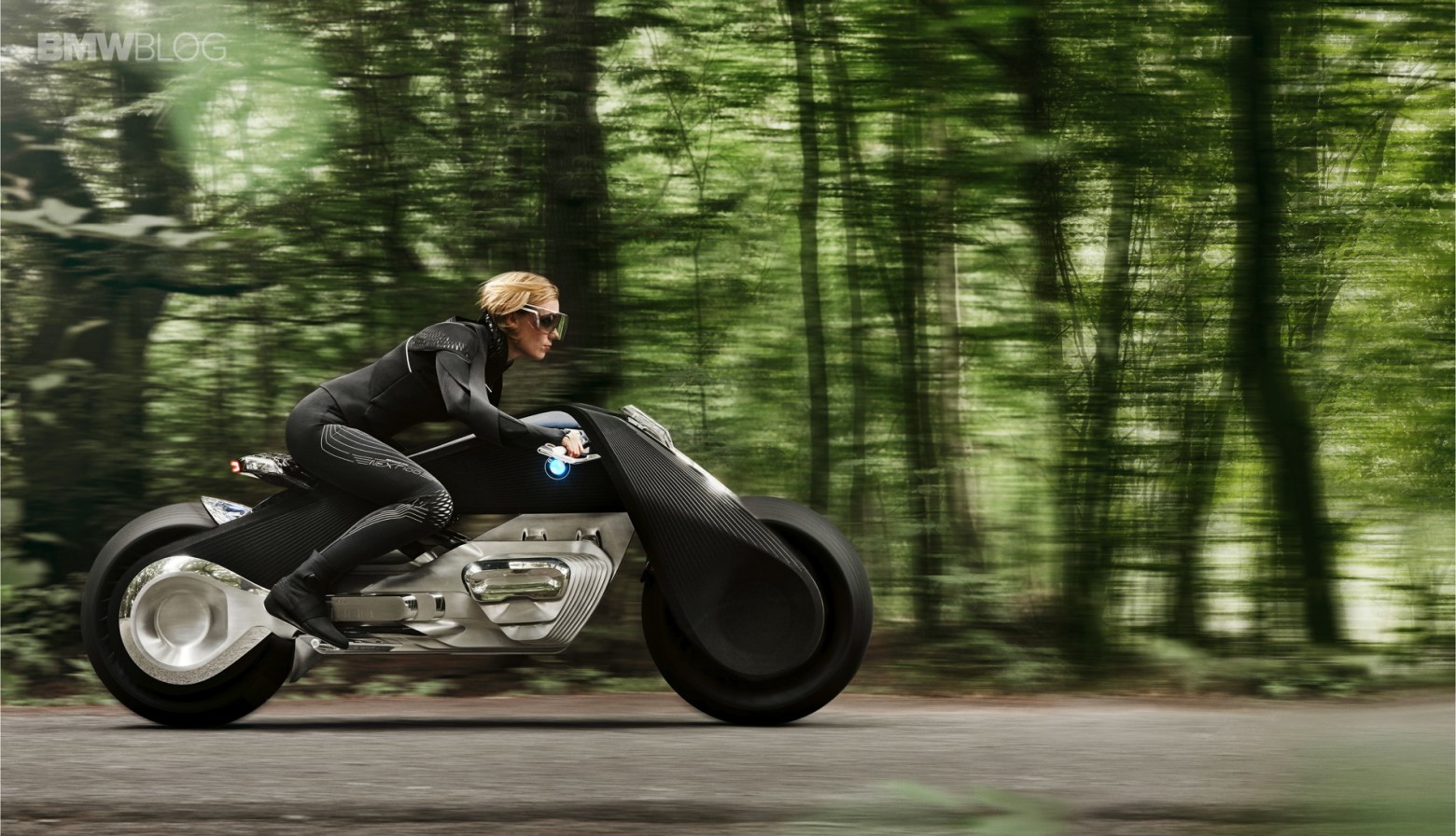
The ergonomics of the BMW Motorrad VISION NEXT 100 is carefully designed for the convenience of the rider, as well as to protect his body from the oncoming air flow. Although from the point of view of aerodynamics, the concept still has room for improvement - it is clear that the pilot's body is poorly protected and almost from the belt rises above the wind shield. The wind shield is made quite low. In general, the concept design is made in a minimalist style.
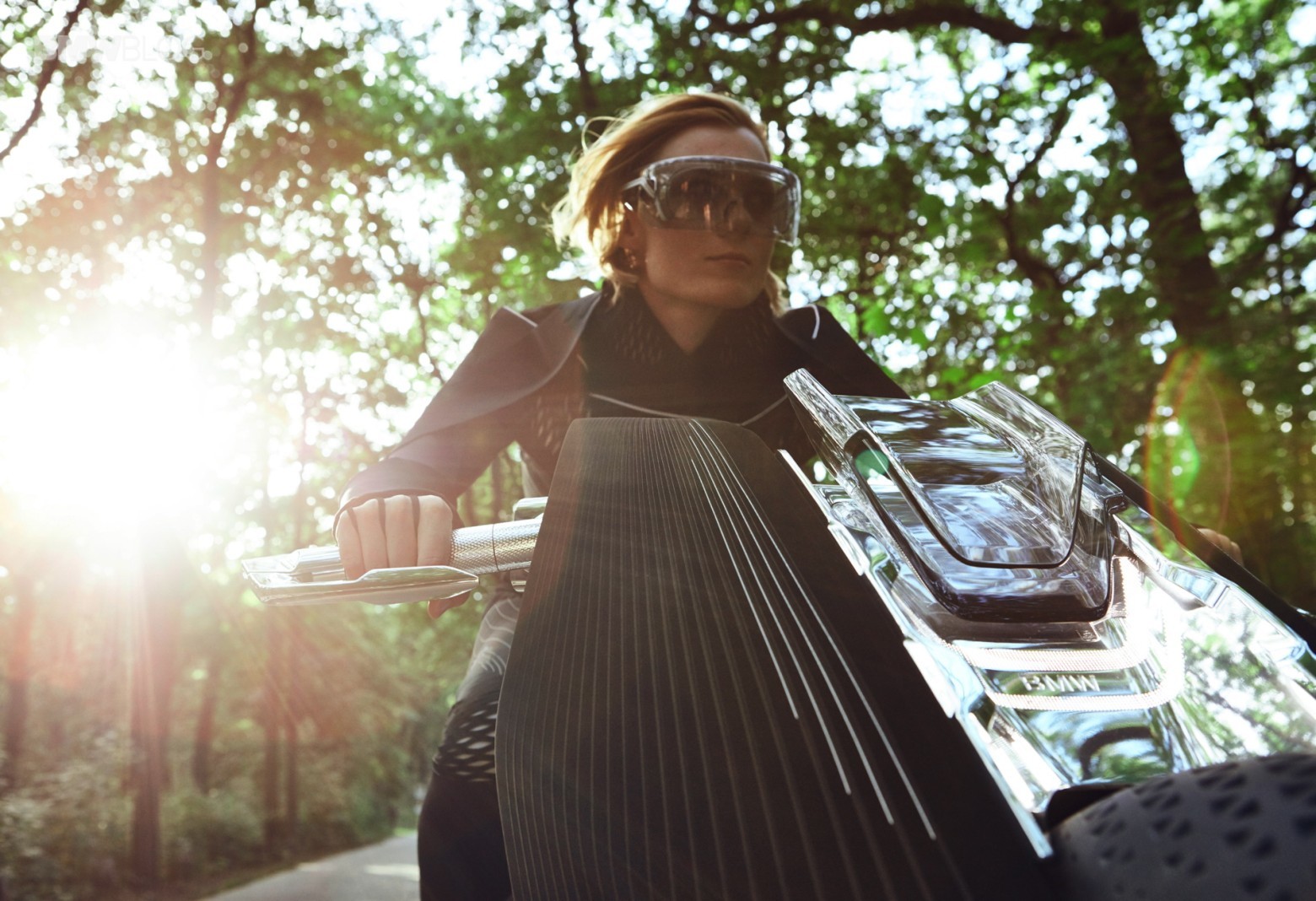
The seat, the upper frame cover and the wings of the motorcycle are made of carbon fiber. In the future, this lightweight and durable material will probably be widely used in the automotive industry. Each saved kilogram of weight gives an increase in the rate of acceleration and saves battery power.
The futuristic look of the motorcycle is complemented by another fantastic technology, variable tire tread. It is assumed that it will actively change depending on the type of road surface and speed.

In the end, the highlight on the cake. The last detail of the future's futuristic motorcycle concept is the “Digital Companion” (Digital Companion), an intelligent driver assistance system that, if necessary, displays messages on the head-mounted display. A visor is a transparent glasses that are extended to the entire field of view of the motorcyclist. There are four areas for them to display data. Points track the direction of the driver's gaze: looking up or down is a command for changing information. For example, looking up displays a picture from the rear view camera and shows what is happening behind. Looking down displays a menu with commands. An even further look down displays a map of the area with the selected route. Navigator commands the pilot to vibrate through the clothes on his hands and feet.
Looking strictly forward completely removes any contextual information from the display.

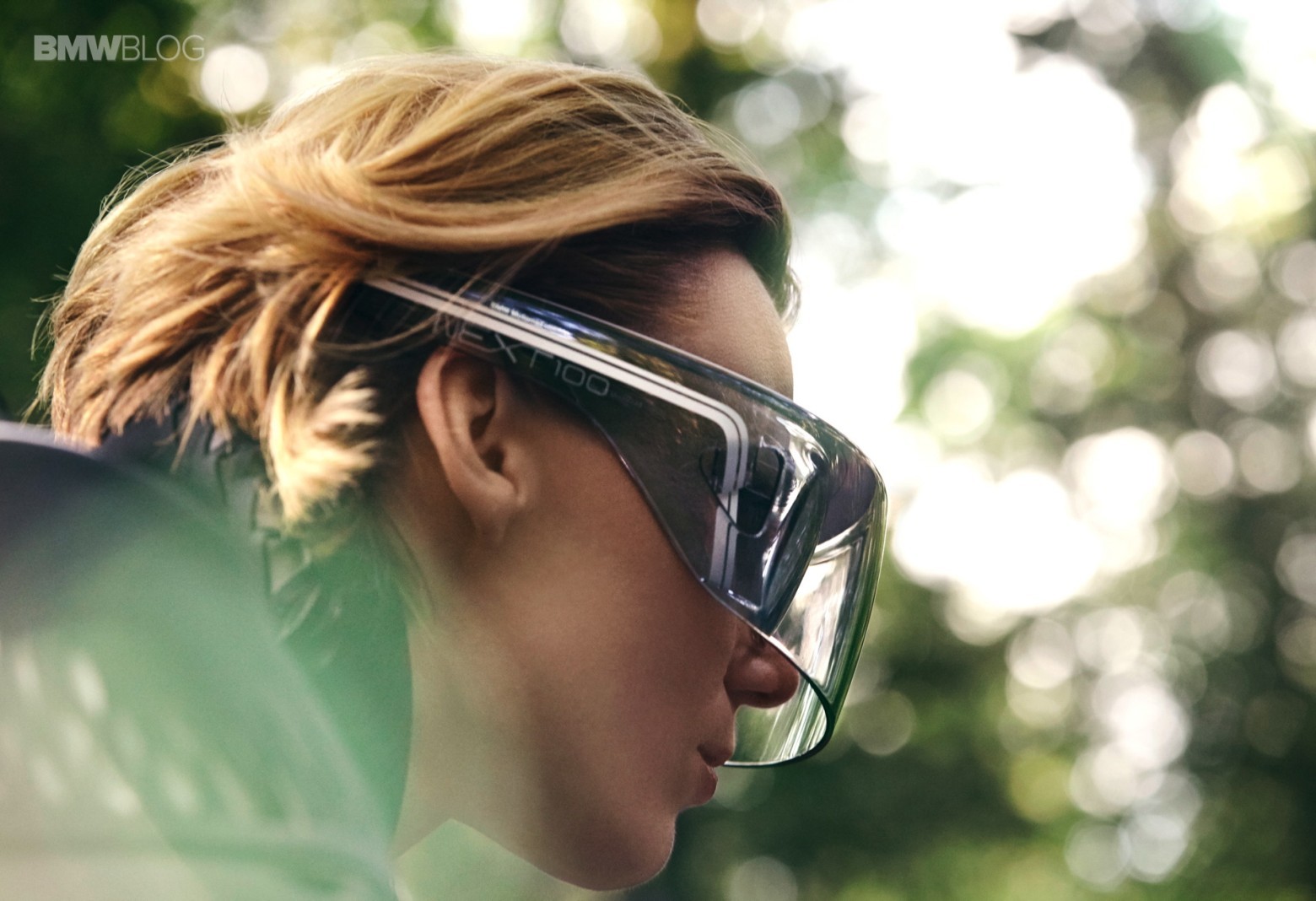
The suit will be included in the complete set of the motorcycle, which, depending on weather conditions, warms or cools the body (sensors measure temperature and pulse).


At high speed, the fabric around the neck is filled with air for comfort.
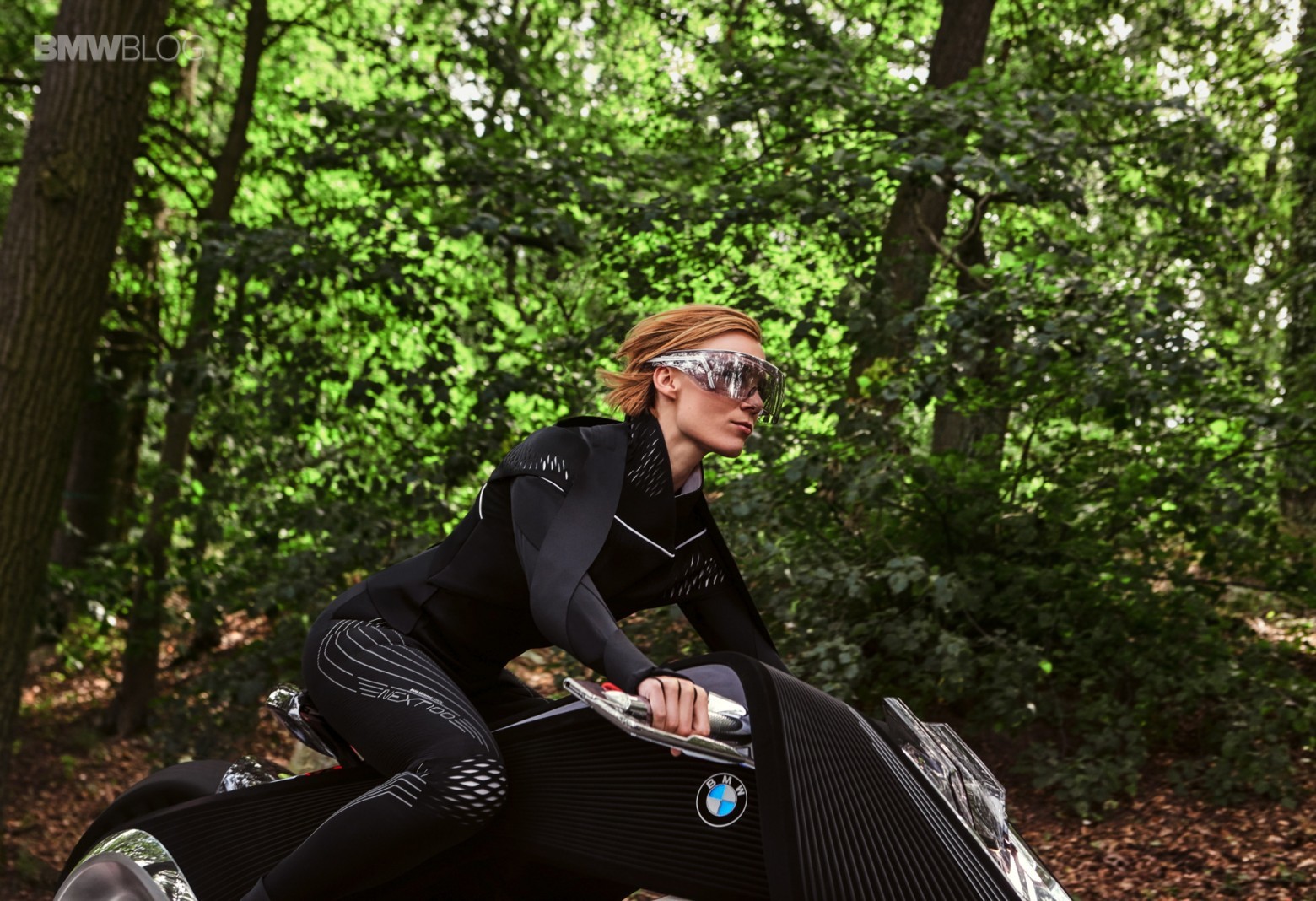
As BMW designers are optimistic, due to the presence of an intellectual security system, equipping a suit with protective elements, like a helmet, is superfluous.
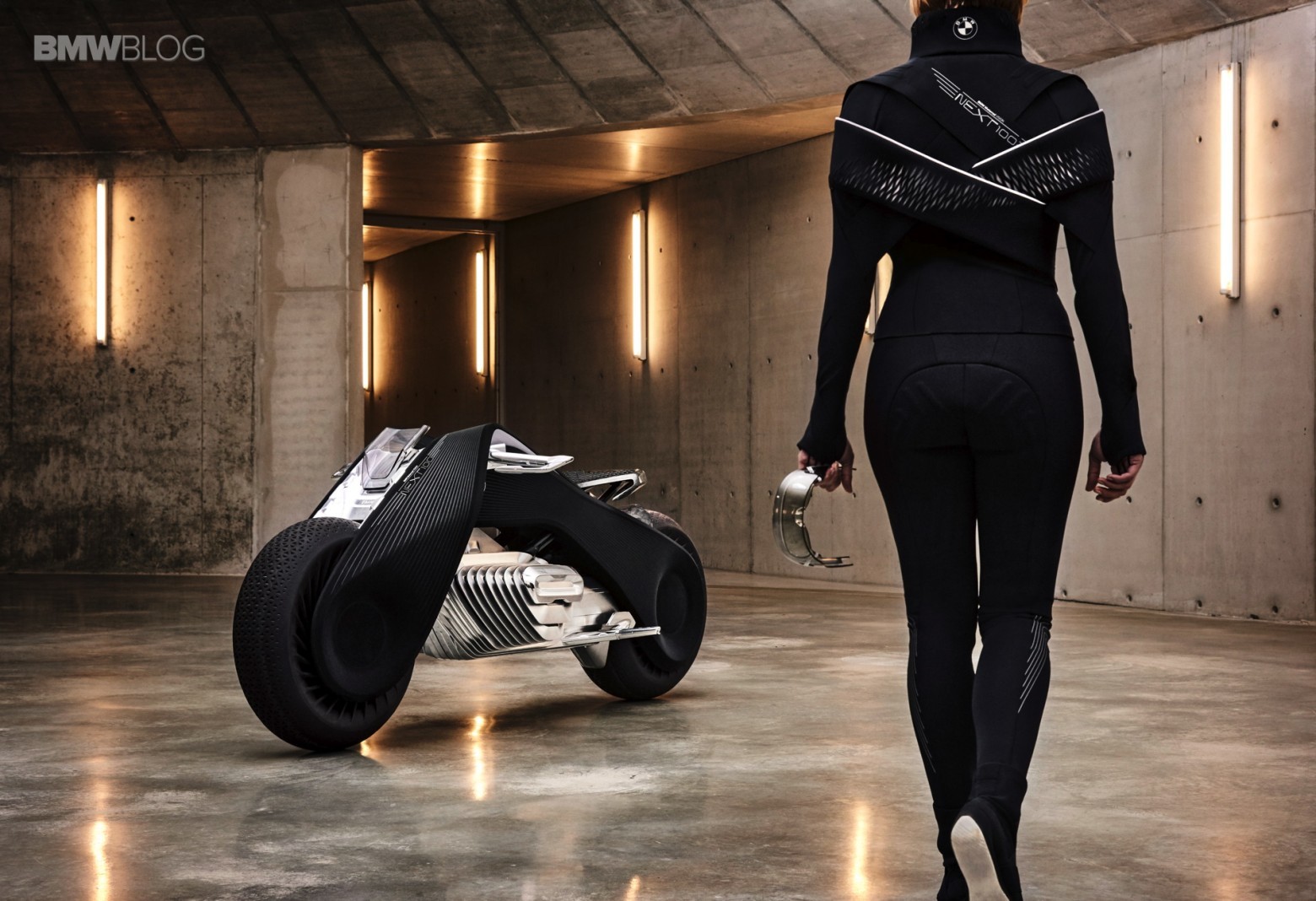
Source: https://habr.com/ru/post/398199/
All Articles